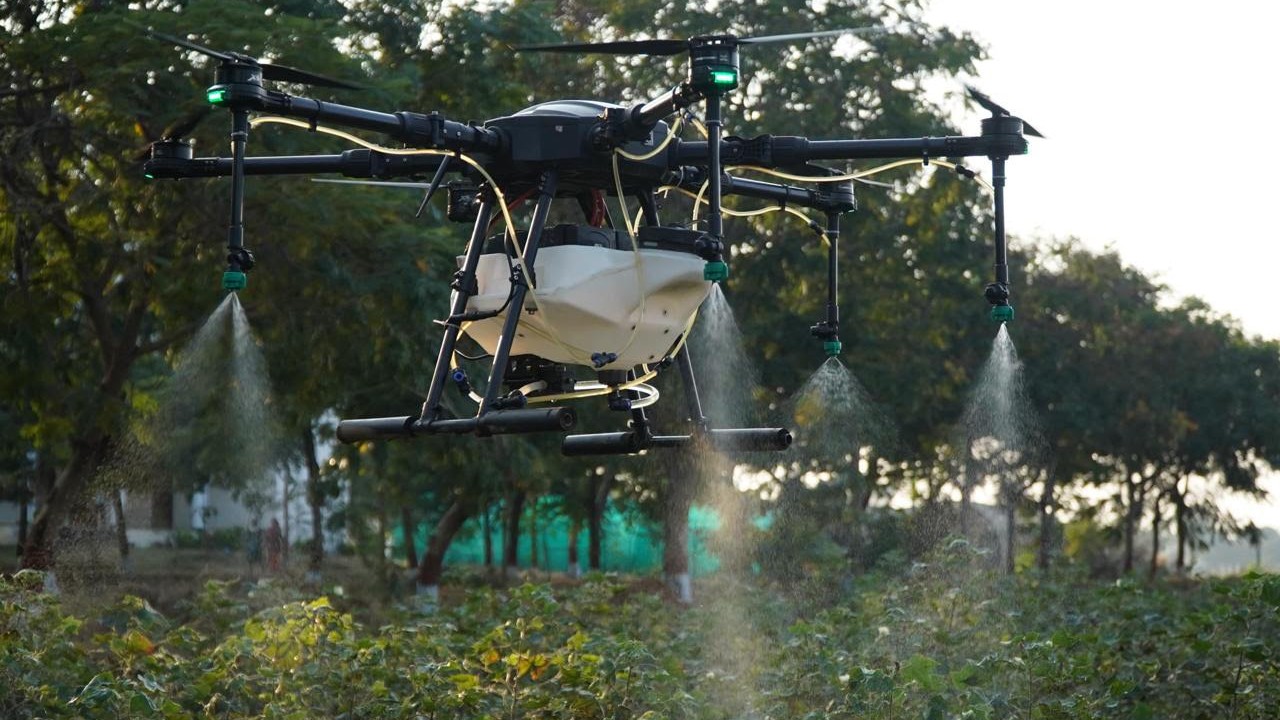
What’s happening in India today? One of the most remarkable developments is unfolding not in cities, but in the farms of Karnataka—especially around Bengaluru. Drones, which were once seen only in tech expos or defense operations, are now transforming Indian agriculture. The latest buzz in Bengaluru news highlights how these flying machines are helping farmers save water, improve crop yields, and reduce the dependency on manual labor. If you’re looking for today’s top stories in innovation, this is one that’s worth your attention.
The Labor Problem and the Drone Solution
Farmers in Karnataka have long struggled with labor shortages. As more people migrate to urban centers like Bengaluru in search of better job opportunities, the number of hands available for farm work has sharply declined. This shortage has pushed the farming community to explore alternatives, and that’s where drone technology is stepping in. Agri-drones can now complete spraying and other field tasks in just a few minutes—work that used to take several hours or an entire day. For many farmers in rural Karnataka, these machines are becoming essential tools, filling the gap left by missing manpower. This trend has quickly become a hot topic in Bengaluru latest news.
Scientific Studies from Bengaluru Prove the Impact
A major turning point came when the University of Agricultural Sciences (UAS), Bengaluru, conducted detailed field trials using drones for spraying fertilizers and pesticides. Their research focused on two important crops—finger millet (ragi) and pigeon pea (tur dal)—and the results were extraordinary. The drone-spraying method used up to 90% less water than traditional techniques. Where manual spraying required around 500 liters of water per hectare, drones used just 55 liters. In addition, crop yields improved by 5% in ragi and 10% in tur dal. These results are not just impressive—they are a clear signal that drone farming can be a game-changer. No wonder this development has earned a place in today’s top stories.
Why Drones Are So Effective in Farming
Drone farming falls under what experts call “precision agriculture.” This method uses technology to make farming more accurate and resource-efficient. In the case of drones, they’re equipped with GPS systems and special nozzles that ensure chemicals are evenly spread across fields. This leads to better crop protection and reduces the overuse of pesticides and fertilizers. Real-time data collection from drones also helps monitor crop health and soil conditions. For farmers near Bengaluru, this means making smarter decisions about when and how to treat their crops—something that’s often highlighted in Bengaluru news.
Environmental and Financial Benefits for Farmers
Apart from time savings, drone farming offers multiple advantages that benefit both the environment and the farmer’s wallet. First, it cuts down the use of harmful chemicals. The precise spraying ensures that only the required amount of pesticide is used, which reduces soil contamination. Second, the savings are substantial. Many farmers report cost reductions of up to 50% on chemical inputs. And since drones use less water, they help preserve this precious resource—especially important in areas facing seasonal droughts. These are the kind of innovations making headlines in latest news reports and sustainability circles.
Real Success Stories from Rural Karnataka
In the areas surrounding Bengaluru, such as Mandya, Kolar, and Hassan, more and more farmers are sharing their positive experiences with drone farming. Many of them used to rely on teams of workers to spray their fields. Now, a single drone operator can complete the job in just 20–30 minutes. For these farmers, drones are not just a cool gadget—they are a practical, cost-effective solution to real agricultural challenges. These success stories are making waves in Bengaluru latest news and inspiring others across the state and the country.
The Future of Drone Farming in India
The future looks very promising. According to experts, India’s agricultural drone market is expected to grow rapidly in the coming years. With government support, training programs, and rental services, the technology is becoming more accessible, even to small and medium-scale farmers. The central government has also launched initiatives to promote the use of drones in farming, especially in underserved rural areas. As this trend spreads, Bengaluru’s agricultural universities and startups are playing a vital role in offering the technology and skills needed to drive change. It’s a story that defines what’s happening in India today and why it matters for the future of farming.
But Challenges Still Remain
Despite the many benefits, drone farming still faces some hurdles. The initial cost of purchasing a drone can be high, making it difficult for some farmers to afford one. That’s why many rely on cooperative rental services or government subsidies. Also, using a drone isn’t as easy as flying a toy. It requires training to adjust the height, speed, chemical mix, and spray pattern for each crop. Regulations and licensing rules for drone usage in agriculture are also still being developed in India. These challenges need to be addressed to make drone technology a true nationwide success.
Final Thoughts: High-Tech Farming Is Here
Drone farming in Karnataka—and especially in and around Bengaluru—is a powerful example of how technology is reshaping traditional sectors. By using drones, farmers are saving time, money, and resources while growing more food in safer ways. For anyone who’s been wondering about what’s happening in India today, this development is one of the most exciting in the world of agriculture. It’s not just a local success—it’s a model for the rest of the country. So, the next time you check out the latest news or open a news app for Bengaluru news, keep an eye on the sky—farming in India is now flying high.
















